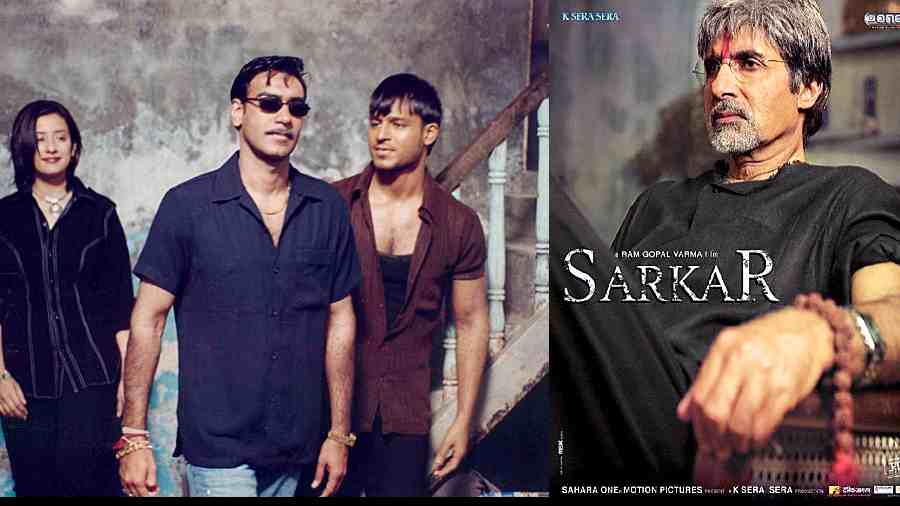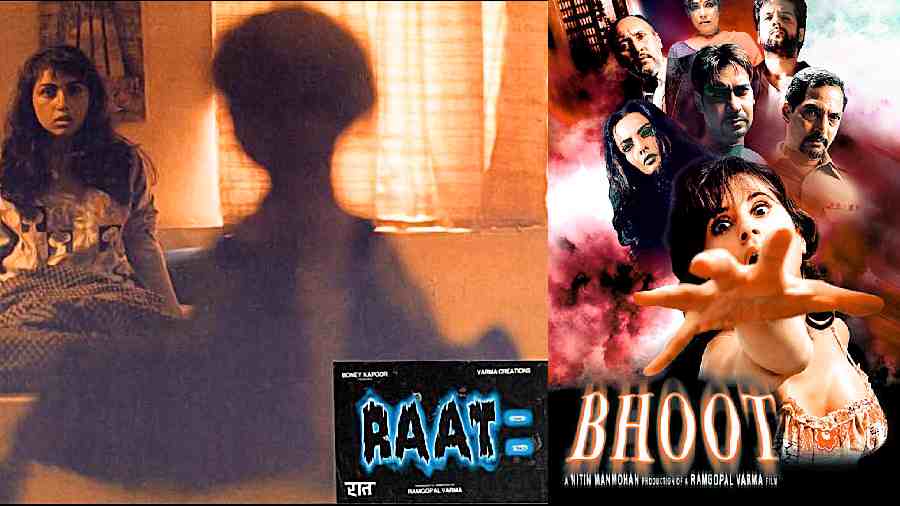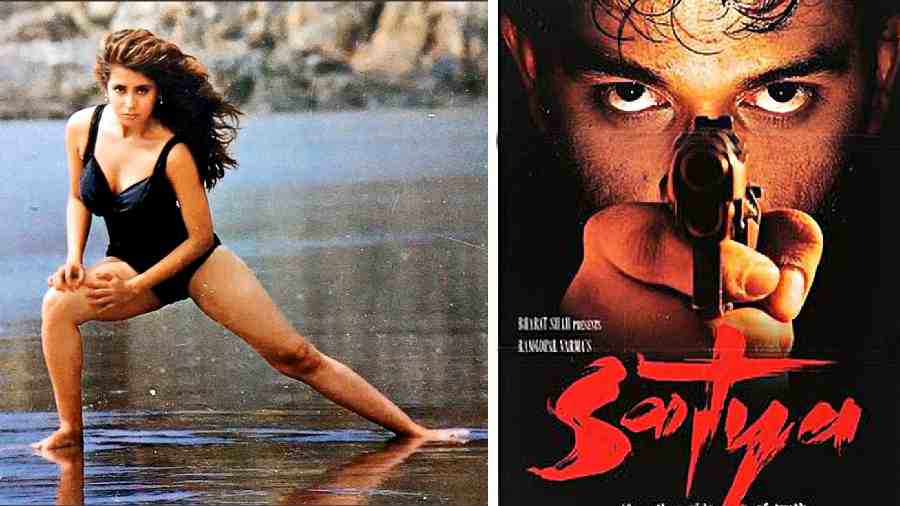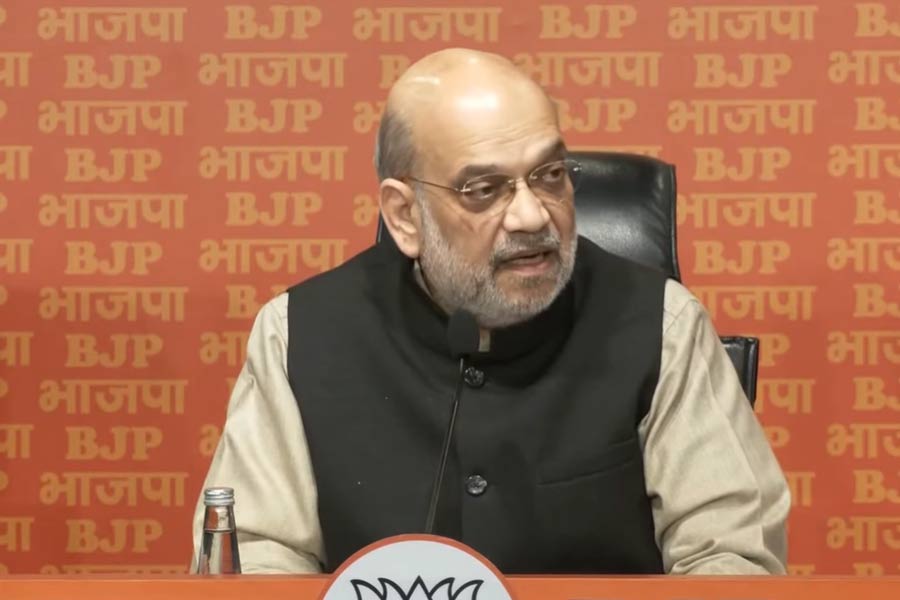Ram Gopal Varma may have lost his mojo in the last decade or so, churning out films that are below-average at best and downright embarrassing at worst, but there is no denying the fact that the man has been a trailblazer in many ways, spawning genres, introducing new talent, resurrecting careers and giving us many a film which has gone down in history. With his film-making style drawing inspiration from influences as varied as novelist Ayn Rand, philosopher Friedrich Nietzsche and authors like James Hadley Chase and Frederick Forsyth, as well as by Mad magazine, RGV has laid the foundation for quite a bit of what we see (and appreciate) in Bollywood today.

Ram Gopal Varma
STUDENT POLITICS AND GANGSTERISM
Ram Gopal Varma’s debut film Siva (1989) was perhaps one of the first mainstream commercial films to pluck student unrest out of the socalled parallel films of the time and craft a compelling tale of student exploitation by antisocial elements. The film — which Varma made in Hindi the following year as Shiva — also laid the seeds of gangsterism, which the film-maker explored very successfully in later films. Siva also gave us two powerful performers in Nagarjuna and Raghuvaran. Even on the technical side, Siva was a seminal film. It is credited with the introduction of steadicam and new sound recording techniques in Telugu cinema

(l-r) Ek Hasina Thi, Shiva
LAID THE FOUNDATION OF THE BOLLY UNDERWORLD FILM
Satya and Company walked so that Gangs of Wasseypur could run. Considered two of his finest films, Ramu meshed the bloodied goingson of the underworld with strong, relatable emotions. This was particularly true of Satya, which was no highly stylised, cool-guy-with-a-gun gangster film but a gritty, honest portrayal of a man who is dragged into a life of crime. Satya today is a cult film, with Varma being credited with spawning what is now called ‘Mumbai noir’.
Company blended fact with fiction, telling a sprawling organised crime tale about the rise and fall of two strongwilled gangsters, and has often drawn comparisons to modern crime film touchstones like Scorsese’s Goodfellas and Coppola’s The Godfather.
Satya and Company also launched and provided a fillip to many careers, the most notable among them being Manoj Bajpayee, Anurag Kashyap (who says that Satya was his ‘film school’) and Vivek Oberoi. RGV also played a big role in kickstarting Randeep Hooda’s career.

(l-r) Company, Sarkar
MADE HORROR MAINSTREAM
Hindi film horror, largely relegated to the B-category till then, was brought to the mainstream with RGV’s 1992 film Raat, which also released in Telugu as Raatri, and is today looked at as a groundbreaking effort in the genre. Inspired by The Exorcist, Raat used all the trademark tropes, but did it very effectively, with the filmmaker giving his own spin to the ‘haunted house’ film, something which he did again with great success with Bhoot in 2003. Even today, Bollywood struggles with horror (Tumbbad, Bulbbul are rare exceptions), with Raat and Bhoot — both rich in atmospherics, relying less on jump-scares and more on slow-burn horror and driven by female protagonists — still considered the gold standard. And, of course, Ramu — aided by Anurag Kashyap’s writing — turned the home invasion thriller on its head with the immensely engaging Kaun?

MADE BACHCHAN ‘SARKAR’
Sarkar, a version of Shiv Sena supremo Bal Thackeray, is, without a doubt, one of Amitabh Bachchan’s most powerful roles in recent years. Bachchan had played a semi-version of the role before in Agneepath, a part which was too talky, but it took an RGV to look beyond the famed baritone and give the man screen time which demanded him to largely remain silent and use his eyes to emote. Bachchan’s charisma, the familiar hand wave, the chants of Govinda Govinda, the expert play of shadow and light, an underworld story meshed with family politics... Varma packed in many elements in Sarkar, and then some more, for a riveting watch.

RESURRECTED URMILA AS THE OOMPH GIRL, GAVE HINDI CINEMA A.R. RAHMAN
Urmila going Tanha tanha atop a bike on the beach in Rangeela remains an indelible image, often making it to many a Bollywood showreel. RGV packed Rangeela with Urmila’s oomph, giving a new life to her career, but didn’t sacrifice story at the altar of sexiness. Rangeela still remains an immensely watchable film, powered by an engaging plot, Aamir Khan’s tapori act and a banger of a soundtrack from A.R. Rahman, who was introduced to Bollywood with Rangeela. Sandeep Chowta (Mast, Jungle, Satya, Company) and Amar Mohile (Sarkar, Agyaat, Vaastu Shastra, Rann) are two other musical talents, among many more, that burst into the scene courtesy RGV.
THE RGV FILM FACTORY
Much before it became the norm for big Bollywood production houses to nurture new talent, Ramu did the same with his RGV Film Factory, taking new film-makers under his wing, mentoring them and producing their films, many of who have become names to reckon with today. Among many other titles, RGV produced Sriram Raghavan’s Ek Hasina Thi, Shool and Love Ke Liye Kuch Bhi Karega by E. Niwas, Rajat Mukherjee’s Pyaar Tune Kya Kiya and Road, Ab Tak Chhappan by Shimit Amin....











